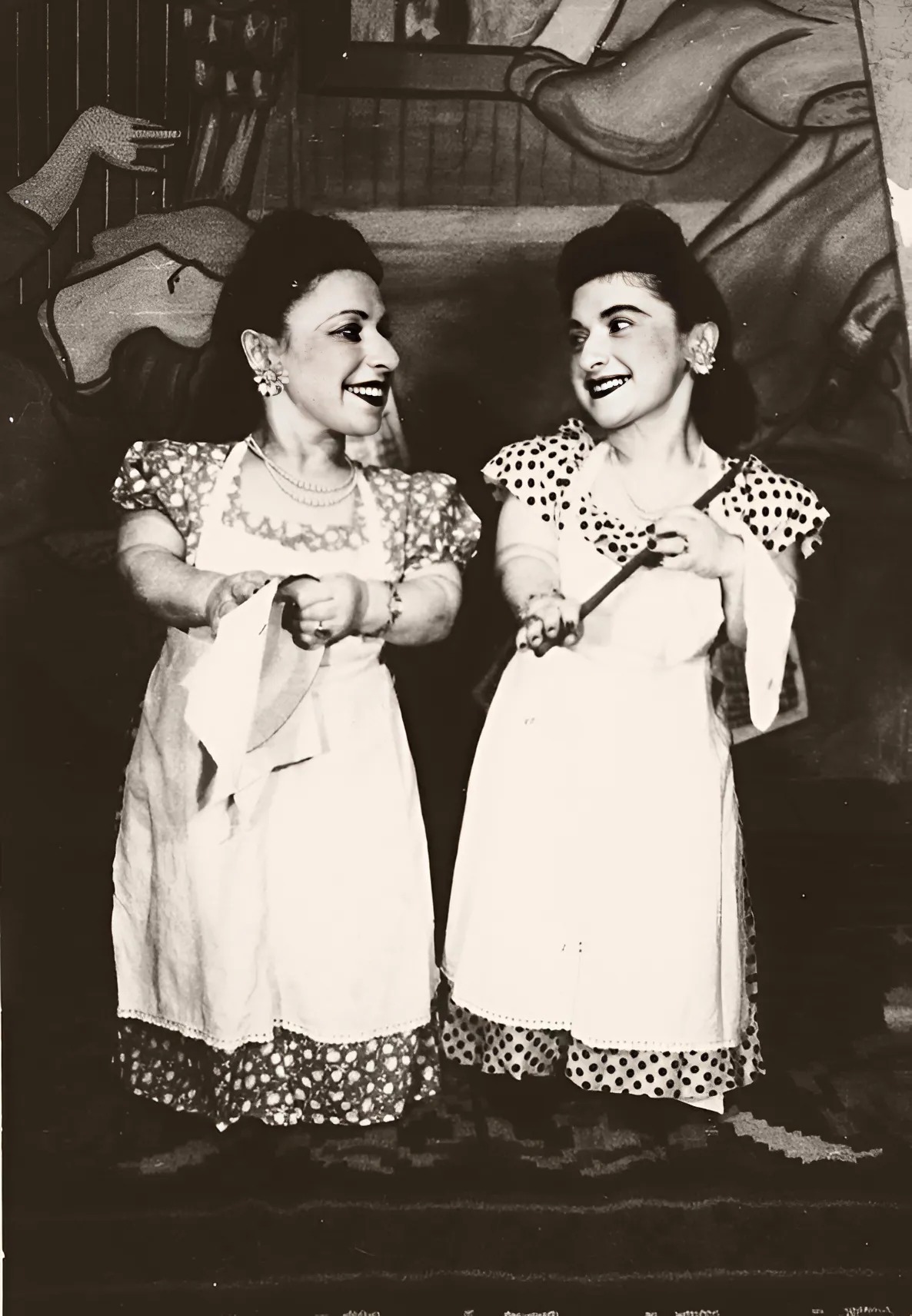The Ovitz sisters were born into one of the most unique families in history — a family where seven out of ten siblings had dwarfism. At the time, doctors were puzzled. It was rare enough for one person in a family to be born with dwarfism, but seven? Medical science had no answers. Yet for the Ovitz family, this was their reality — and somehow, they turned it into something extraordinary.
They lived in a small town tucked away in the Carpathian Mountains, where life was simple and closely tied to tradition. The family was Jewish, and their roots ran deep in the local community. But their appearance made them stand out. Instead of hiding away or letting prejudice isolate them, they embraced who they were and found strength in their unity.
Their unusual family dynamic eventually gave birth to something magical: a traveling performance group known as the “Lilliput Troupe.” The siblings, along with some of their relatives, took to the stage across Europe. They sang, played instruments, told jokes, and brought joy to audiences who were fascinated — not just by their size, but by their talent, charm, and energy. They didn’t rely on their appearance to attract attention. Their skills spoke for themselves.
People came from all over to see them. Imagine the laughter they sparked, the music that filled the air, and the way they must have captivated audiences with their stage presence. The troupe was more than entertainment — it was a celebration of life, difference, and resilience.
But the world around them was shifting. The rise of the Nazi regime darkened the skies of Europe, and by 1944, the Ovitz family’s joyful journey took a horrifying turn. They were arrested and deported to the Auschwitz concentration camp — a place that represented the very worst of human cruelty.
There, they caught the attention of one of history’s most notorious figures: Dr. Josef Mengele, known as the “Angel of Death.” Mengele was obsessed with twins, people with disabilities, and especially dwarfs. When he saw the Ovitz family, he couldn’t believe it — seven dwarfs in a single family. To him, they weren’t people. They were specimens.
The family was subjected to unspeakable experiments. X-rays were administered without protection. Teeth were pulled. Chemicals were injected into their eyes. Their bodies were measured down to the tiniest detail. Mengele’s goal wasn’t to heal or understand — it was to manipulate, to harm, and to satisfy his twisted scientific curiosity.
And yet, through all the pain and terror, the Ovitz family survived. They leaned on each other for strength. They offered hope and comfort not only to one another, but also to fellow prisoners. They shared scraps of food, whispered words of encouragement, and showed humanity in a place that had none.
When Auschwitz was finally liberated, the Ovitz family did something incredible: they walked out together. In a world where so many families were torn apart forever, they remained whole. Their survival wasn’t just physical — it was spiritual. They had endured the unthinkable and lived to tell their story.
After the war, they returned to the stage. They kept performing, not just for money or fame, but to reclaim their identity — to show the world that they were more than victims. They were artists. They were survivors. They were a family.
The last surviving member of this remarkable family, Perla Ovitz, passed away in 2001. Her death marked the end of an era — but their story lives on, a testament to love, courage, and the power of standing together in the face of cruelty.






